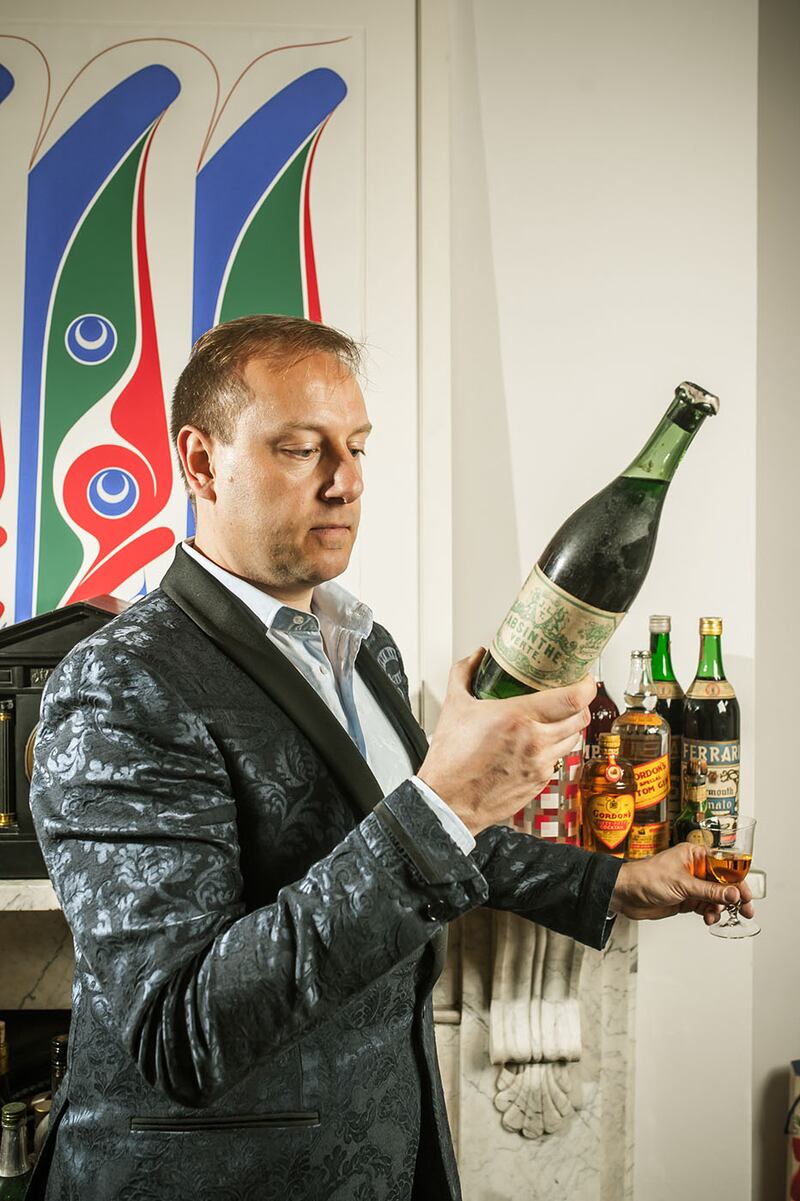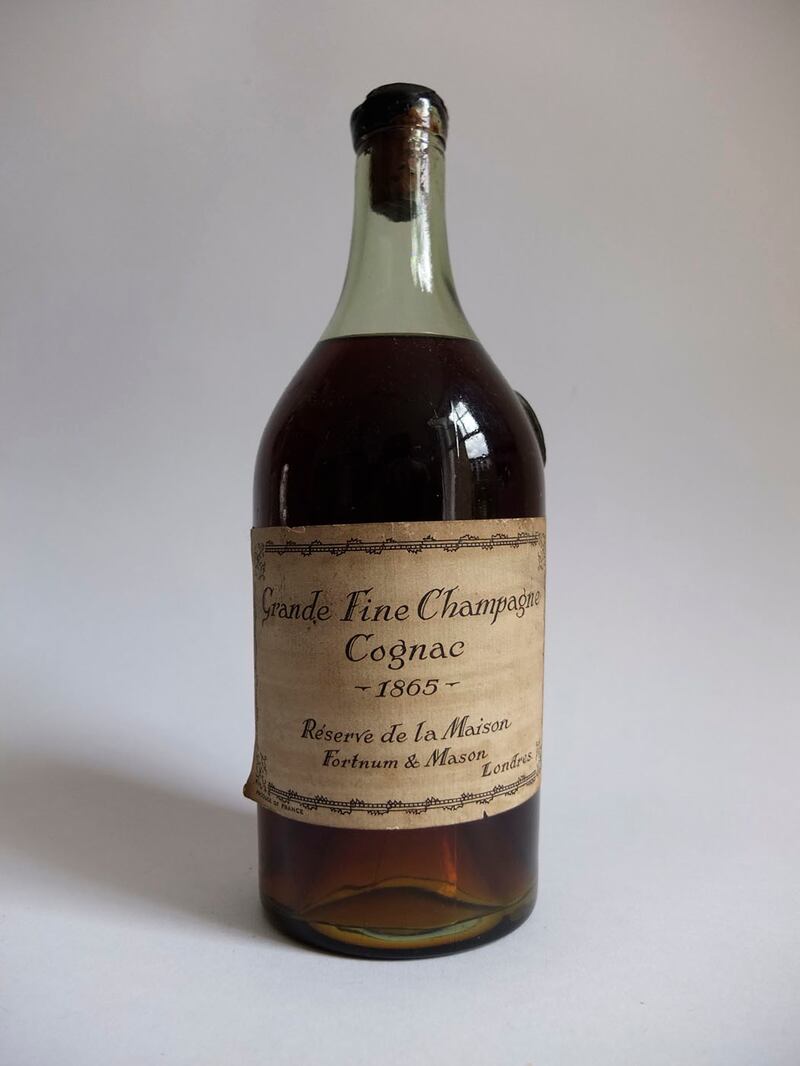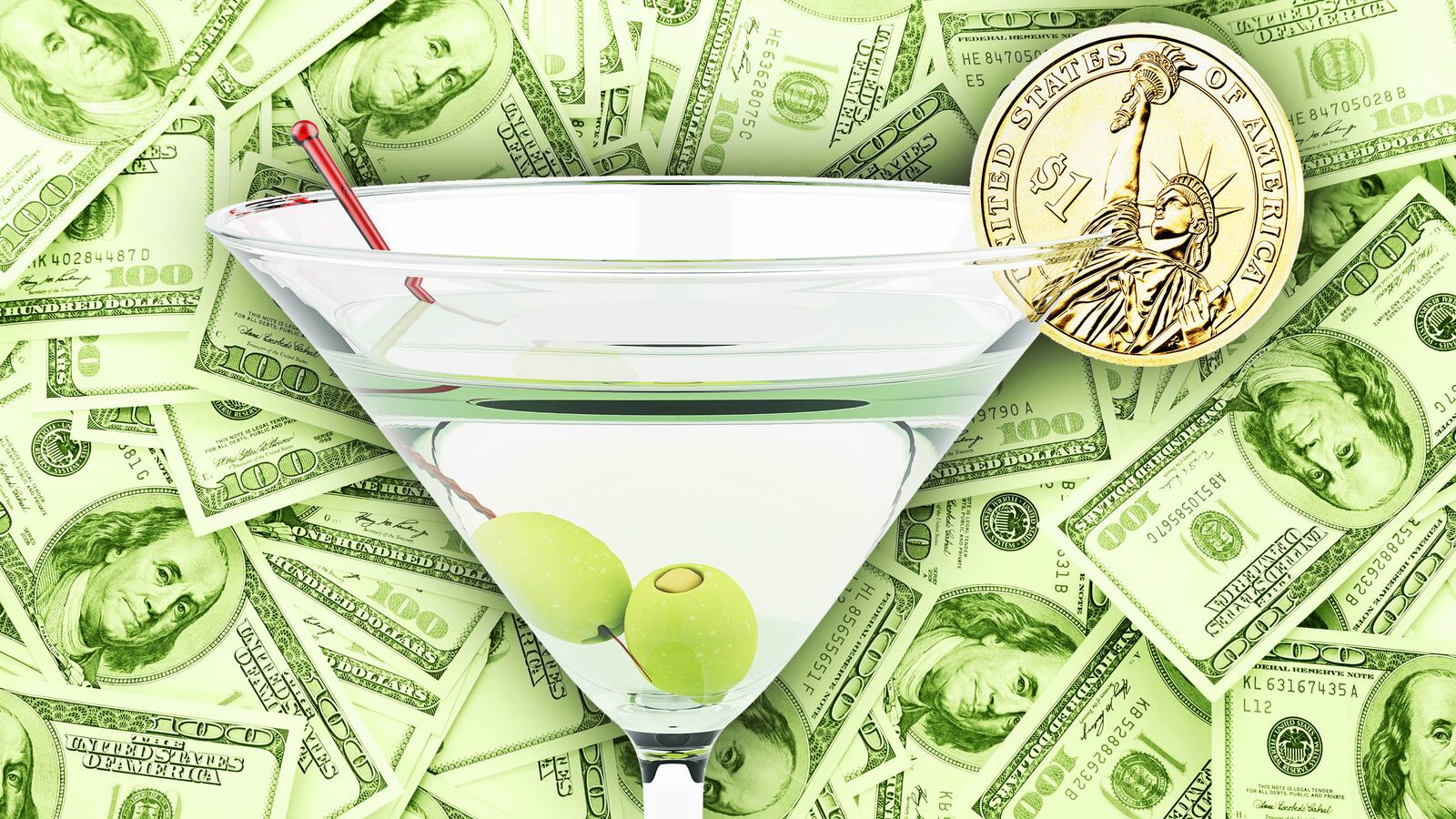Let’s say that you just learned that your elderly bachelor uncle, the retired accountant, has suddenly died. It was unexpected. Our condolences.
You generously volunteer to help with closing out his estate by cleaning out his house. And in emptying a downstairs closet you find—behind a broken canister vacuum cleaner that hasn’t been made for 65 years and some half-filled S&H Green Stamp Books—several cardboard cartons. They’re heavy. Turns out they’re filled with unopened bottles of liquor, their caps still sealed with tax stamps. Then you remember: Your uncle always groused that clients gave him bottles of liquor every Christmas. All he drank was Catalan wine.
Sadly, all you drink is beer, so the bottles are of scant interest for personal consumption. But you figure these bottles have to be worth something. And you’re probably right. But how much, how do you find out, and where do you sell them?
Allow me to introduce you to Edgar Harden of London, appraiser and purveyor of vintage spirits. He’s a Canadian, and started his career in the art business, with expertise in 17th to 19th century French decorative arts. He served tours of duty at the Getty Museum in Los Angeles and Christie’s auction house in New York. While at Christie’s his office happened to be down the hall from the wine department, and he was often invited to tastings of wines from the 1940s to the 1960s. He did not turn these invitations down. He thus started to develop inadvertent secondary expertise.

In 2002, he put out his own shingle as an antiques consultant, and added wine to his portfolio. In 2008, he moved his business to London. While liquidating an estate there he found a case of vintage Gordon’s Gin in a wine cellar. The client told him to throw it away. He didn’t it. He took it home and cracked a bottle open. He tried it and thought, this is amazing. He swiftly sold the remaining 11 bottles to famous London barkeeper Tony Conigliaro.
“Since then, I’ve focused on spirits more and more,” he says. Starting around 2010, he’s been a full-time vintage spirits appraiser and broker, and founder of the Old Spirits Co.
He had good timing. The market for vintage spirits has boomed in the past decade, with collectors, aficionados, and bar owners clamoring for the rare and unusual. This has been abetted by some recent changes in state laws, such as in North Carolina and Kentucky, that now permit bars to sell antique spirits by the glass.

Yet the market for vintage spirits in the United States is anything but frictionless—it’s filled with nettles and thorns, most dating from post-Prohibition concerns about alcohol making its way to minors, and taxes being evaded. It’s easier to legally sell an old pistol than an old bottle of bourbon.
Auctioneers must obtain a special license to sell liquor. Antique stores can’t legally sell full bottles. And about ten years ago, eBay cracked down on liquor sales on its website. (Don’t even ask about shipping such rare purchases.) Which leaves those cases of leftover spirits orphaned. While vintage spirits vendors (such as Harden) have surfaced to fill a need, the second-hand trade in old hooch largely remains an under-the-table affair, which makes accurate valuations all the more difficult.
So, once you drag out that carton out of the closet, what’s next? Here are some tips from Harden on getting a handle on what you’ve got:
Before you can assign a value, you need a clear understanding of three main things: Who made it? When did they make it? And what’s the demand for (and therefore value of) it today? The who part is fairly easy—it’s usually right on the label, assuming the label still exists. (If not, you might as well pour yourself a glass—a label-less bottle’s value is limited.) The “when” part is far more tricky. And figuring out the value is the trickiest yet.
Think of your discovery as an episode of CSI: Barfly. Don’t disturb anything, and that includes the cardboard carton in which you found the bottles. Look carefully inside the box for labels or neck tags that might have slipped off. If you’ve found a complete case, Harden says, the shipping date is sometimes stamped on the bottom of the box. Check it out.
If there’s a tax seal over the closure or a tax stamp on the bottle, it means the bottle predates 1984, and that strip may contain a mother lode of information—in many cases, you should be able to narrow down production to within 10 years. One big shift came in 1979, when “IRS” on the label was changed to “ATF.” Many other minor changes in tax stamp design and terminology have been documented. This Drinks Planet post offers some solid information, and your friend Google will turn up other good leads (search: “U.S. alcohol treasury tax stamps”). Some bottles may also have a stamp from the state where it was sold, which is smaller than federal stamps. These were often printed with the signature of the state comptroller. Some online searching should turn up when that person served in office.
A bottled filled to the top and looking spiffy and new is preferred—an open bottle drops in value like a new car driven off the lot, largely because there’s no guarantee that someone didn’t fill the bottle with bottom-shelf liquor. If the top is still sealed but the liquid level has dropped a few fingers, don’t fret: the contents could still be fine. Corks and screw caps are imperfect barriers against evaporation, and the quality of the alcohol may not have been affected.
Besides the obvious—what’s in the bottle and who made it—a label can serve up plenty of clues about dates, often by the information omitted. No barcode? It certainly was made prior to the mid-1980s. No surgeon’s general health warning? The federal government mandated those starting in 1989. Volume listed in quarts rather than liters? Then it’s pre-1979.
Also note the listed alcoholic proof. Many brands have slowly stepped down their contents over time—say, from 43.4-percent alcohol by volume to 43- percent to 40-percent—and you might be able to figure out when that occurred with some internet sleuthing.
The label can contain other data that might not seem helpful at first, such as the address of the importer. Harden says that he was recently working to date some early Johnnie Walker bottles, and noticed that one bottle had an importer’s address of 100 Rockefeller Center and another 90 East 42nd St. in New York. “I can look into the records and see when they moved,” he says.
Bottle experts are a whole breed unto themselves, but learning a bit about the evolution of bottle manufacturing can help narrow down dates. Does it have a cork or screw-top? Is there a date of bottle manufacture stamped on the bottom? Harden notes that he found one early bottle that lacked any information save for a fragment of a Christie’s auction label, which he used to identify it as pre-1930. But by noting that the bottle had been made in a three-part mold, he could identify it as even earlier—late Victorian or early Edwardian. “It’s like the Antiques Roadshow,” he says, “there’s a kind of specialist knowledge the comes with the category over time.”
While importer’s catalogs can be helpful in narrowing down dates—you might turn some up with a bit of online snooping—other sources feature depictions of labels that can help with dating. Early cocktail guides were often sponsored by liquor companies and featured ads scattered throughout depicting bottles, with the copyright date up front helping narrow down production timeframes. And newspaper databases, such as newspapers.com, often feature ads placed by local liquor stores with depictions of bottles and the dates right at the top of the page. Same with ads in Life or other national publications, which can also be found on Google Books.
Markets ebb and flow, and a lot depends on whether you’ve turned up an obscure liqueur, a common gin, or a mass-market Canadian whisky. When it comes to pricing, no liquor is inherently more valuable than another—all you need is two obsessives with fat wallets who want the same thing, and prices can soar.
Right now, the fat-wallet crowd seems to want old whiskey of any sort, especially Scotch and early bourbons. In particular, they want Macallan—this past May two rare bottles sold for more than $1 million each. (Was your uncle gifted a case of rare Macallan? Congratulations!)
Harden says that early Chartreuse bottles sell well, mostly to high-performing bartenders who aren’t interested in collecting, but in tasting and sharing. And Harden speculates that Irish whiskey, which has lately attracted considerable attention among Japanese collectors, may enjoy the next boom. “It’s just a hunch,” he says. “I may be wrong.”
No pricing database for rare spirits exists—it’s more a matter of educating yourself to get an idea of what’s selling and within what range.
You could subscribe to Harden’s regular “vintage report” that lists bottles for sale (register at his Old Spirits Co. website), or prowl the forums at Brandy Classics or The Whiskey Exchange to get an idea of current values. For instance, Whisky Exchange recently offered up a 1990s bottle of Appleton Estate Rum for $250; Harden had a bottle of 1980s-era Southern Comfort for $300.
Bear in mind that these are retail prices—if you sell to a dealer, they’ll offer wholesale prices, or about half retail.
“I’ll often get an email from someone saying I found one of these bottles of whiskey, and I saw on The Whisky Exchange that it’s worth two thousand pounds, and would you like to buy it?,” Harden says. “That’s a non-starter.”
Have something truly rare? An auction house might be willing to sell the bottle for you. If you’d rather sell directly to a buyer, such transactions tend to be private and informal. You might start a conversation with someone on one of the collector forums, and then take your business to private email. But be warned, these deals may violate, local, state or federal laws. (You can check with your state liquor authority to find out what is legal in your area.)
You might also scout local bars and see if you can find a bar owner drawn to vintage spirits. (In Kentucky, for instance, you can legally sell a vintage spirit directly to a bar.) Then work out a trade. It’s not full retirement, but a generous bar credit at an agreeable bar strikes me as being pretty much the same thing.






